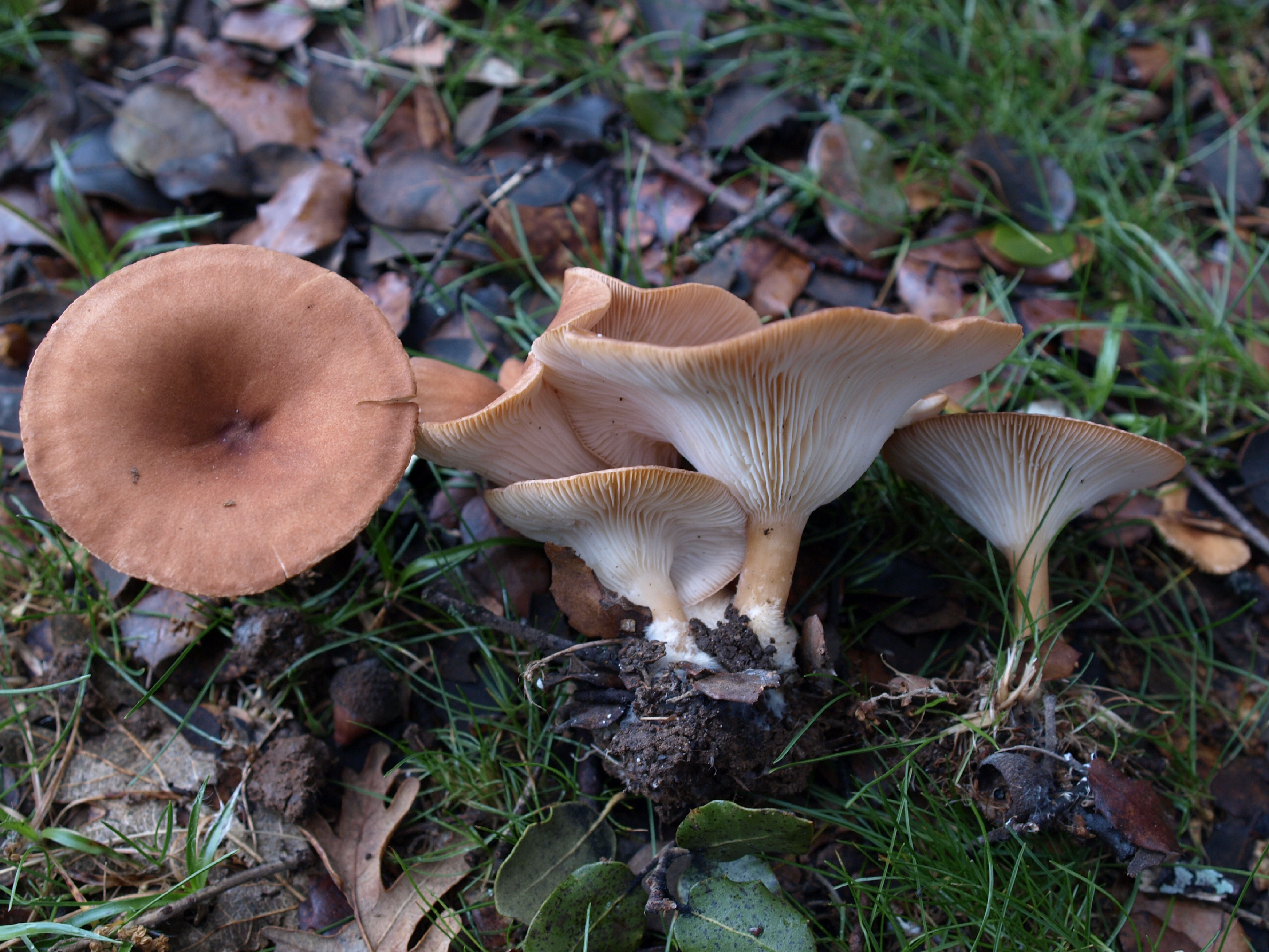
Clitocybe gibba (Pers.) P. Kumm. (=Clitocybe infundibuliformis sensu auct.) [= Infundibulicybe gibba (Pers.) Harmaja], commonly known as “funnel mushroom”, is a very common and cosmopolitan leaf litter-decaying agaric. This species contributes to humus formation and nutrient cycling in both deciduous and coniferous forests of boreal and temperate regions. The most noteworthy morphological features of its fruit bodies are the cream ochraceous to reddish ochraceous funnel-shaped pileus, whitish decurrent gills, and cylindrical pale ochraceous central stipe.
Although its current name in Index Fungorum is C. gibba, it was transferred to the genus Infundibulicybe based on morphological and chemical features of spores (Harmaja, 2003). Molecular analyses indicate that Clitocybe is a polyphyletic genus, in which some of the species are included in the Tricholomataceae family within the Tricholomatoid clade of the order Agaricales (Matheny et. al., 2006), but others, such as C. gibba (under I. gibba), were included in a separate clade considered as a sister group of the Tricholomatoid clade. In a more recent analysis based on nuclear ribosomal RNA and rpb2 genes (Sánchez-García et al., 2014), C. gibba (as I. gibba) is placed within the Tricholomatoid clade but outside the Tricholomataceae s.str. family, together with several species from the genera Lepista, Clitocybe s.str. and Collybia, whose positions are not currently well resolved.
In a comparative study on Japanese larch (Larix leptolepis) litter decay by 27 fungal species, C. gibba was reported as one of the most efficient basidiomycetes attacking both lignin and carbohydrates (although with only 9% weight loss) (Osono et al., 2003). However, no members of the genus Clitocybe (neither of Infundibulicybe) had been previously sequenced at JGI. Related Lepista nuda CBS 247.69, a common leaf litter decayer from the Tricholomatoid clade, was proposed to be sequenced in CSP15-1609, and its genome is already available at JGI. Therefore, sequencing the C. gibba genome will be of interest because it will permit comparison of the lignocellulolytic machinery of two of the most representative leaf litter decayers in the Tricholomatoid clade. It will also increase our knowledge on the diversification of oxidative extracellular enzymes involved in humus formation, and will encourage comparative genomic studies with other representative leaf litter decayers such as Rhodocollybia butyracea (Omphalotaceae family in the Marasmioid clade), another CSP15-1609 fungus whose genome is available at JGI.
Genome Reference(s)
Ruiz-Dueñas FJ, Barrasa JM, Sánchez-García M, Camarero S, Miyauchi S, Serrano A, Linde D, Babiker R, Drula E, Ayuso-Fernández I, Pacheco R, Padilla G, Ferreira P, Barriuso J, Kellner H, Castanera R, Alfaro M, Ramírez L, Pisabarro AG, Riley R, Kuo A, Andreopoulos W, LaButti K, Pangilinan J, Tritt A, Lipzen A, He G, Yan M, Ng V, Grigoriev IV, Cullen D, Martin F, Rosso MN, Henrissat B, Hibbett D, Martínez AT
Genomic Analysis Enlightens Agaricales Lifestyle Evolution and Increasing Peroxidase Diversity.
Mol Biol Evol. 2021 Apr 13;38(4):1428-1446. doi: 10.1093/molbev/msaa301
References
Harmaja, H., 2003. Notes on Clitocybe s. lato (Agaricales). Ann. Bot. Fennici, 40: 213-218.
Matheny, P.B., Curtis, J.M., Hofstetter, V., Aime, M.C., Moncalvo, J.M., Ge, Z.W., Yang, Z.L., Slot, J.C., Ammirati, J.F., Baroni, T.J., Bougher, N.L., Hughes, K.W., Lodge, D.J., Kerrigan, R.W., Seidl, M.T., Aanen, D.K., DeNitis, M., Daniele, G.M., Desjardin, D.E., Kropp, B.R., Norvell, L.L., Parker, A., Vellinga, E.C., Vilgalys, R., Hibbett, D.S., 2006. Major clades of Agaricales: a multilocus phylogenetic overview. Mycologia 98, 982-995.
Osono, T., Fukasawa, Y., Takeda, H., 2003. Roles of diverse fungi in larch needle litter decomposition. Mycologia 95, 820-826.
Sánchez-García, M., Matheny, P.B., Palfner, G., Lodge, D.J., 2014. Deconstructing the Tricholomataceae (Agaricales) and introduction of the genera Albomagister, Corneriella, Pogonoloma and Pseudotricholoma. Taxon 63, 993-1007.
